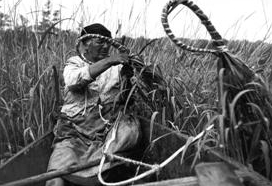Both archaeology and ethnology materials are strongly represented in the MPM collections.
Currently there are approximately 57,000 catalogued items or lots in archaeology, with approximately 36,000 catalogued items in ethnology.
Archaeology
The Museum’s strong but focused archaeology collections are heavily weighted toward North America (82% of archaeology holdings), with smaller but important collections from Central and South America (14% of archaeology holdings). Most of the remaining material is from the Old World, primarily consisting of Paleolithic, Neolithic and Bronze Age to Roman European items.
Wisconsin Archaeology
Within North America, 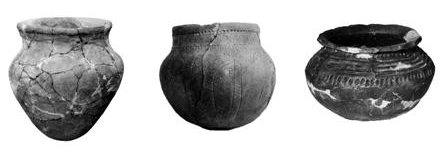
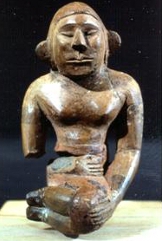
U.S. State Archaeology
Non-Wisconsin North American archaeological collections are organized by state, and include significant collections of Mandan village material, Middle Woodland Hopewellian material from both Illinois and Ohio, a small but valuable collection of material from Spiro Mound in Oklahoma, and sizeable collections of ceramics from both Mississippian period sites in the American midcontinent and ancestral Puebloan sites in the American Southwest. Other areas are more sparsely represented, with 48 states represented (as of 12/2011, Delaware and New Hampshire are not represented in the collections). The Museum also holds important North American collections by artifact type, including the celebrated George West pipe collection (see Bulletin of the Milwaukee Public Museum, Vol. 17, parts 1 & 2), separately inventoried and stored, and major collections of copper implements groundstone tools, and grooved axes. Particularly noteworthy are unique collections such as the Hopewell-period figurines from Knight Mounds, Illinois, and the matched set of large effigy pipes from the Emerald Mound in Mississippi.
Latin American Archaeology
Central and South American archaeology holdings include: collections of Peruvian featherwork; Peruvian mummies; pre-Columbian ceramics numbering more than 7,000 items; gold from Peru, Panama, Costa Rica and Colombia; and a wide variety of pre-Columbian artifacts in other media, including shell, stone and wood. The Peruvian archaeological featherwork and textiles are particularly noteworthy. The holdings include a significant collection of vessels from Casas Grandes in northern Mexico, as well as a strong ceramic collection from South America, with special emphasis on Chimu vessels from the North Coast and Nazca vessels from the South Coast, and excavated material from Atitlan, Bilbao, and Chinkultik. Maya materials include a series of Jaina figurines, along with significant materials from West Mexico. The Museum also holds a small collection of archaeological material from the Caribbean, particularly Grenada.
Old World Archaeology
Old World archaeology collections focus on European paleolithic sites, with special emphasis on the French middle and upper paleolithic, as well as smaller collections of paleolithic through neolithic materials from Hungary. The Museum also holds collections of lake-dweller materials from Switzerland, mostly from the Robenhausen site, and lithic collections from the Fayum of Egypt. Additional Old World archaeological material – Greek, Etruscan, Roman, Cypriot, and Maltese - is housed in the Anthropology department.
Ethnology
North American Ethnology
MPM holds outstanding ethnological collections with worldwide scope. About 62% of current holdings represent North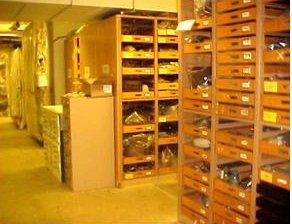
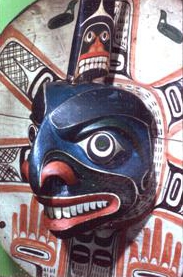
Latin American Ethnology
Central and Mesoamerican materials represent about 7% of ethnology holdings, and include important collections from the Caribbean, Mexico, and Guatemala. MPM’s carnival mask, Guatemalan Maya, Tarahumara (mainly the Zingg-Bennett collection), and the LaTorre Mexican Kickapoo collections are particularly noteworthy. South American collections represent nearly 5% of ethnology holdings, and focus on rainforest and Andean cultures, with special strengths in featherwork and items of personal adornment.
African Ethnology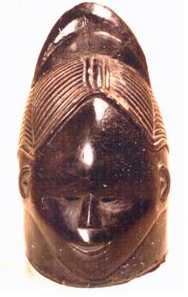
Pacific and Oceanic Ethnology
Pacific and Oceania material represents about 11% of the ethnology holdings, with strong collections of Polynesian tapa cloth, Australian bark paintings (especially the Waterman-Laskin collection), and a variety of materials from the Phillippines, most dating to the time of the 1903 World’s Fair. In addition to strong general collections from Oceania, the Morton May Sepik River collection and the Meinecke New Ireland collection are particularly noteworthy.
Old Word Ethnology
Ethnology also houses an important collection of Saami (Lapp) material (ca. 2.3% of total ethnology holdings). Remaining Old World material is generally catalogued through the History department.

Archives, Photographs and Miscellaneous Collections
Archival material includes original field and collection notes by curatorial staff, particularly Samuel Barrett, W.C. McKern, Lee Parsons, Stephen Borheygi, and Robert Ritzenthaler. Photographic collections relating to Wisconsin Indians are indexed in Milwaukee Public Museum Contributions in Anthropology and History No. 5, and to non-Wisconsin native peoples in Milwaukee Public Museum Contributions in Anthropology and History No. 6. Both collections comprise the Milwaukee Public Museum American Indian Photograph Collection, with duplicate prints maintained by the Anthropology department, although a smaller collection of prints of Native Americans, representing photographs not made by the Milwaukee Public Museum, are separately maintained within the department.
Ancillary materials also include a duplicate copy of the Wisconsin state archaeological site files (complete through the late 1980s), approximately 5,000 catalogued slides, approximately 42 linear feet of American Indian Resource files, five linear feet of phonograph records, and some 300 anthropological films, videos, and audio tapes. In addition, the department maintains case files listing all objects on exhibit, with photographs and schematic drawings showing the location, catalogue, and accession numbers of all items from Anthropology holdings on public display.
The department also created and sponsors the Wisconsin Indian Resource Project, a grant-supported, web-based compendium of materials on native populations, history, and culture. Accession-related correspondence and supporting documentation is housed within the department, as are full catalogues and collector files. NAGPRA documentation, inventories, consultation records, etc., are housed in the Anthropology department.
Native American Resource File (NARF)
The Milwaukee Public Museum’s Anthropology department houses the Native American Resource File (NARF), a collection of paper items dedicated to North American Indians. Established in the 1970s by Dr. Nancy Oestreich Lurie, anthropologist and curator emerita of the Museum, this resource consists of an assortment of general and specific information about American Indians. NARF includes material on native tribes and related subjects, national Indian organizations and associations, and American Indian produced newspapers. Newspaper and magazine clippings, newsletters, student papers, booklets, packets, and other material also comprise the collection, which dates back to the late 1960s.
The Native American Resource File is organized into four main categories: tribes, subjects, organizations/associations, and periodicals. Five 4-drawer filing cabinets contain files on general information on American Indians in specific U.S. states, about 30 subject files, and more than 150 tribes. Each tribe has a separate file containing information about specific topics, while subject files relate to themes, such as mascots, health, and education, focusing on American Indians as a whole. Over 50 archival boxes hold nearly 40 different newspapers produced by tribes in the United States and Canada.
For a complete finding aid, please see refer to our NARF spreadsheet.


